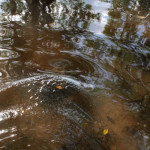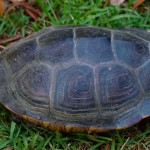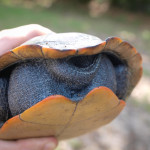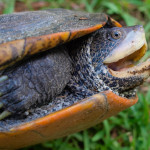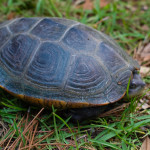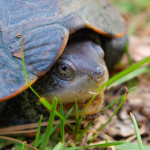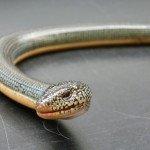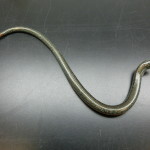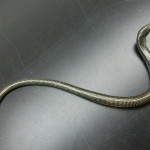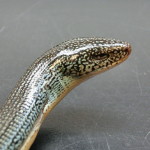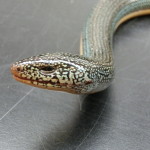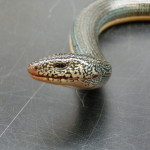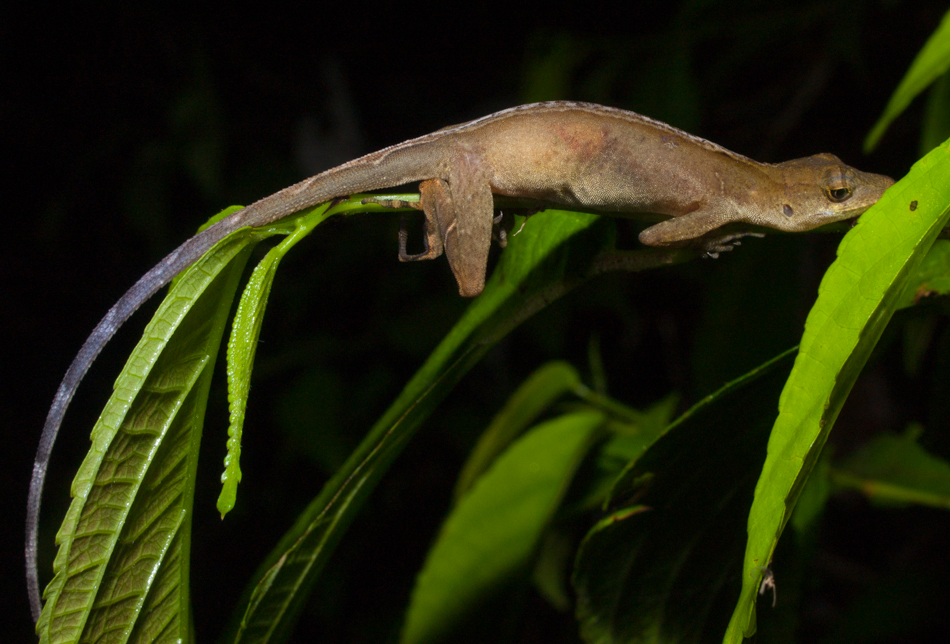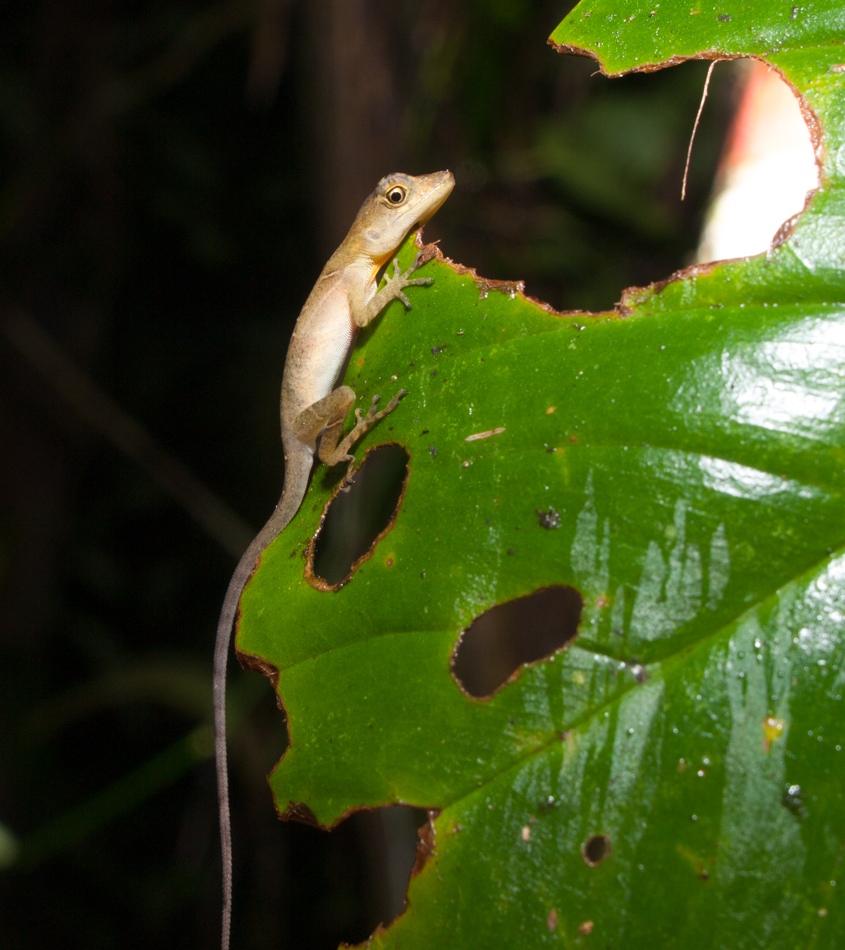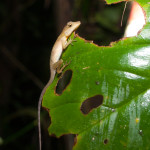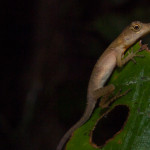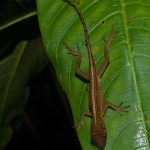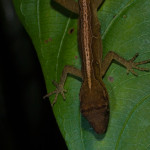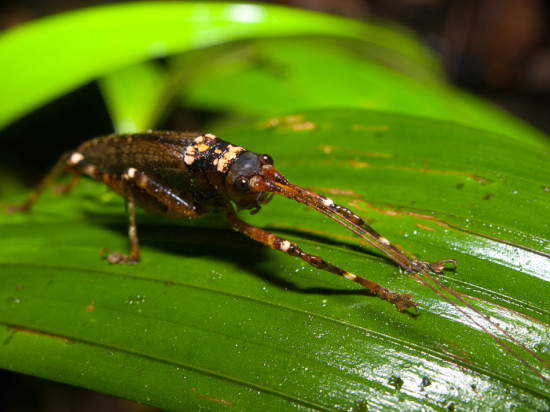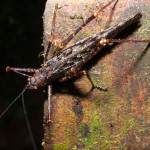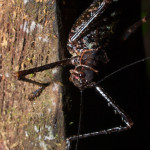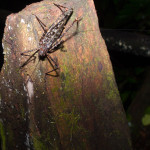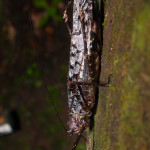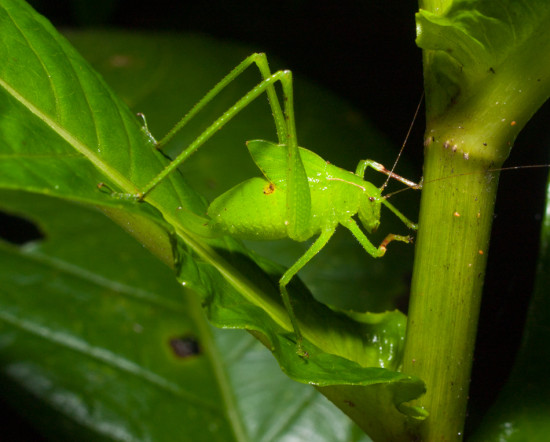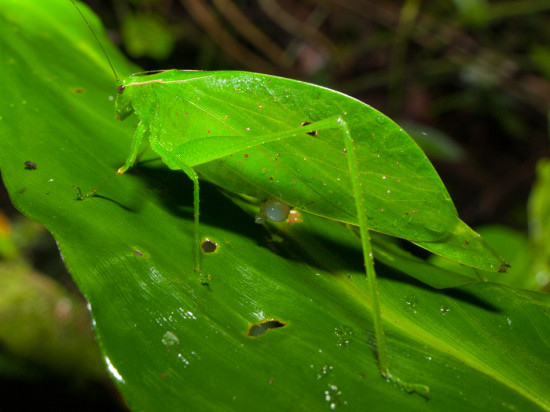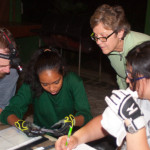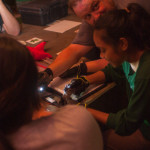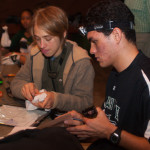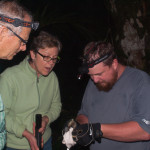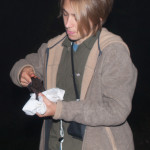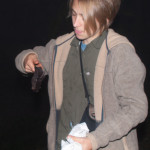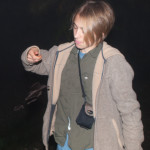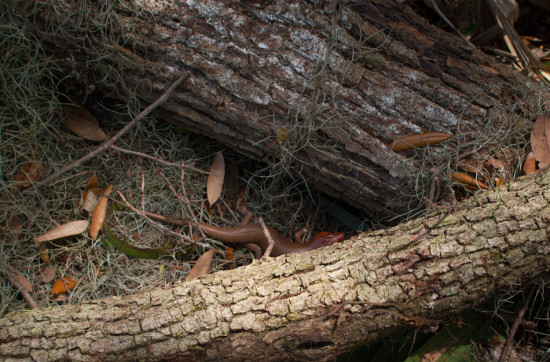 A broadhead skink Plestiodon laticeps that was a bit too fast for me. This specimen was fairly large, probably approaching the maximum in the normal size range for this species at about 30 cm in total length. I found this specimen at Skidaway.
A broadhead skink Plestiodon laticeps that was a bit too fast for me. This specimen was fairly large, probably approaching the maximum in the normal size range for this species at about 30 cm in total length. I found this specimen at Skidaway.
Tag Archives: Animals
Diamondback Terrapin
I found a Diamondback terrapin, Malaclemys terrapin, outside of my apartment in May. Well… Amos really found her, but I made the catch and provided the identification.
She was likely gravid and was setting out to lay her eggs outside of the salt marsh adjacent to my apartment. While I prepared my camera, I placed her on the patio with Rocky, my Eastern Box Turtle, who promptly mounted the terrapin…
Eastern Glass Lizard
On my way into Armstrong Atlantic this morning, I found this legless, Eastern Glass Lizard: Ophisaurus ventralis. It was positioned in the posture in the photographs when I encountered in on the side of the road, so, when I dismounted my bike and approached it, I hesitated to grab it to avoid being bitten… Then, when I did grab it, I realized it was stiff and dead.
Glass lizards resemble snakes, in that they don’t have legs, but have external ear openings (the hole on the head, behind the eye) and movable eyelids. Relative to snakes, they’ve evolved from a distinct lineage of lizards and belong to the family Anguidae. Anguids look a bit like skinks, especially those Anguids with legs, and I’ve encountered one in Costa Rica – a beast of a lizard called a galliwasp. Glass lizards are reportedly pretty common around here, and I’ve seen one other on Skidaway Island, but it was too fast to catch. A friend also captured some on video mating… (edit: before seeing the video, I thought the subjects were anguids – looks more like broad-headed skink though)
Sleeping Anoles
Jessie Knowlton, one of the mentors of NAPIRE, had a keen eye for sleeping Norops polylepis.
We’ll go with one more katydid…
Another tettigoniid
At least I think this is another long-horned orthopteran. There are several families in the tropics of Orthopterans that I don’t know, so it could be something entirely different. This individual has a short-horned grasshopper appearance (Acrididae), but extremely long antennae, which is a characteristic of the tettigonids (i.e., katydids). The tympana location differs between the two families too: it should be on the tibia of the fore-legs in tettigonids as seen here.
Juvenile katydid
Juvenile female leaf-mimicking katydid (Tettigoniidae). Females have the large, sword-like, ovipositor at the end of their abdomen, and adults have full wings that cover the entire body.
I also ran into this, which I took in another part of Costa Rica a few years ago.
Katydid with nuptial gifts
Found another katydid (Tettigoniidae) with spermatophores/nuptial gifts present, as I mentioned observing here!
The little white bubbles at the tip of this female’s abdomen (about halfway down the length of the wings; there are two, but only one is visible on this shot), can contain various amounts carbohydrates and proteins as a gift from a mate along with sperm.
More bat research
Jason and Alice work with students (Kela, Tali and Ashley) and the owners of Finca Cántaros during some bat mist netting.
Bat release
Alice sadly releases a bat

